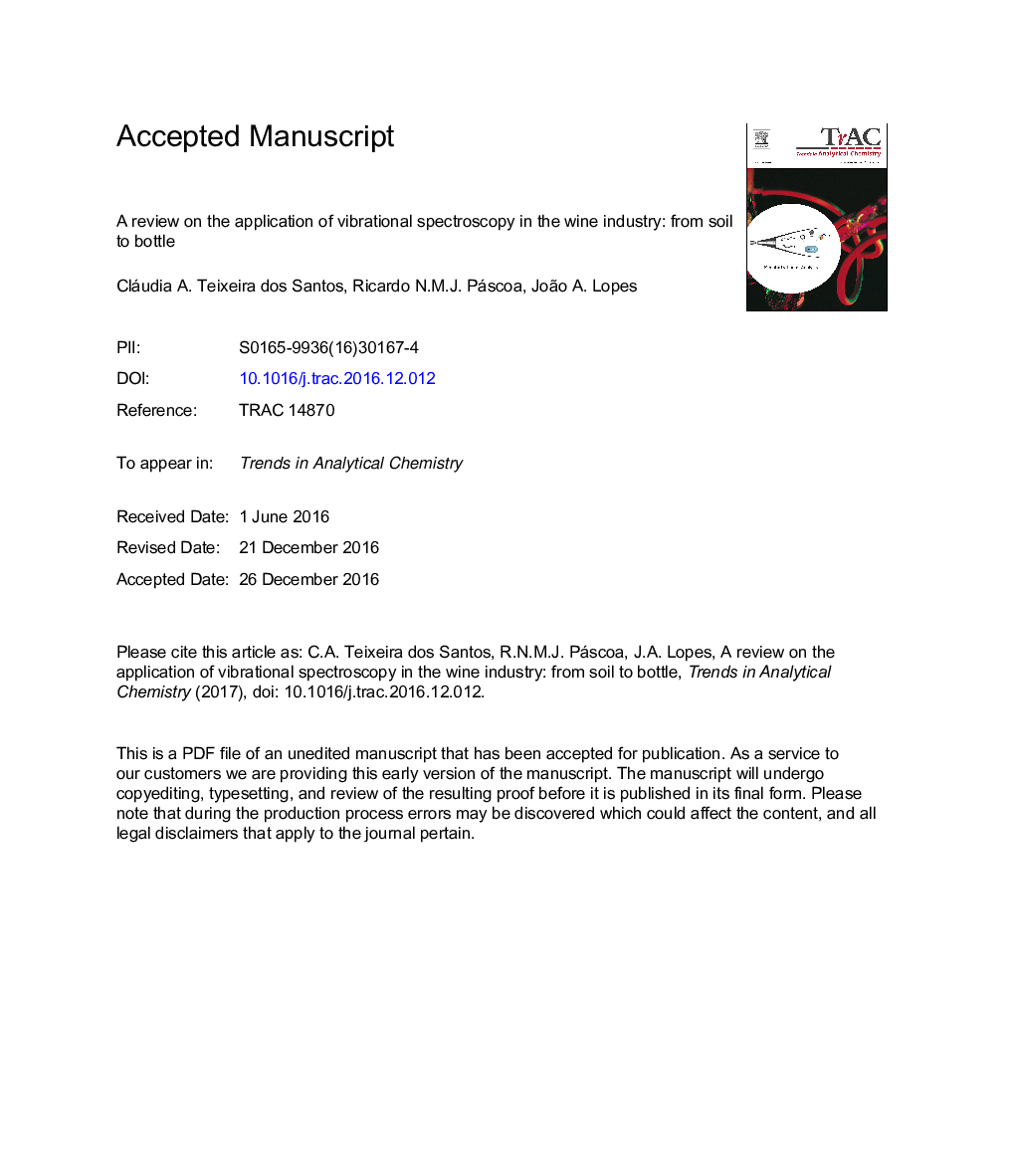| Article ID | Journal | Published Year | Pages | File Type |
|---|---|---|---|---|
| 5141669 | TrAC Trends in Analytical Chemistry | 2017 | 66 Pages |
Abstract
Every step of its production has strong influences in the desired quality of the end product. Therefore, for wine producers and wine makers, it is crucial to control every step of the wine production chain by assessing its compositional features. In the last decades, the potential of vibrational spectroscopy techniques (near-infrared, mid-infrared and Raman) has been widely enhanced by numerous applications in this field. These techniques have accomplished numerous purposes, since the management of soil practices to the analysis of bottled wine, with different levels of success. Continuous improvements in technology, instrumentation and chemometric methods, suggest the possibility of replacing some of the currently adopted slow, expensive and laborious methods, by automated vibrational techniques capable of in-situ and real-time measurements, with a similar level of precision and accuracy.
Keywords
OIVTSSPLSNIRATRAcousto-optical tunable filterAOTFVis-NIRMIRPCAAttenuated total reflectanceFourier-transformPrincipal component analysisPartial least squaresWineWinemakingVibrational spectroscopyRaman spectroscopyMid-infrared spectroscopyNear-infrared spectroscopyInfraredNear infraredmid infraredtotal soluble solids
Related Topics
Physical Sciences and Engineering
Chemistry
Analytical Chemistry
Authors
Cláudia A. Teixeira dos Santos, Ricardo N.M.J. Páscoa, João A. Lopes,
